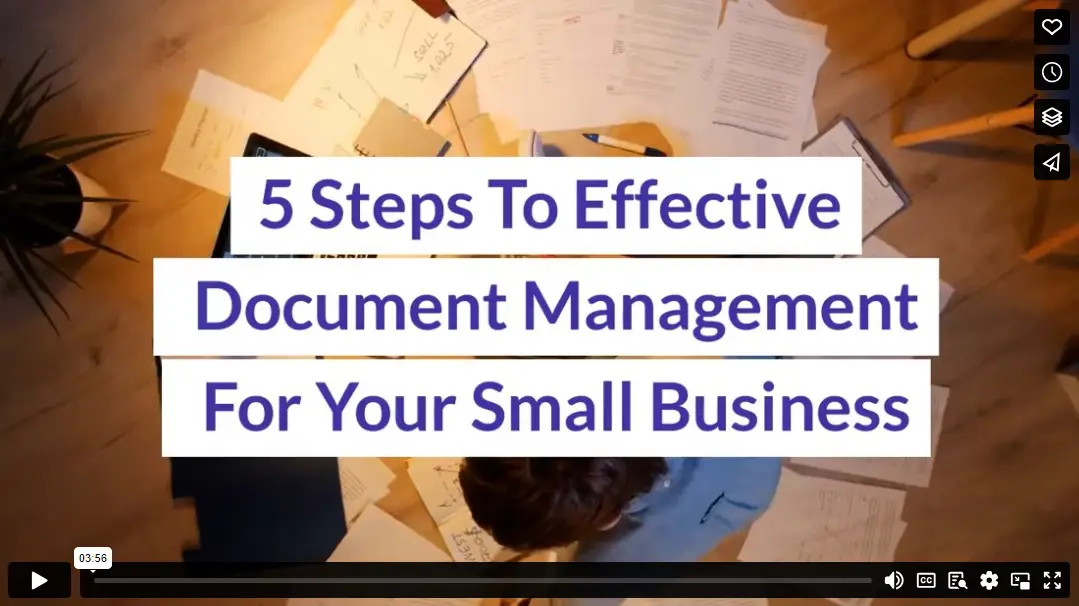Document management is critical to maintaining an efficient and effective office. You should be able to access clients’ information when needed, trust that everything is in their file, and see who is actively working with that information. As your business grows, your old process may not be effective anymore. Here are five steps for creating an efficient business document management system:

(KamranAydinov/Freepik)
1. Establish The Project Lead
Whether you are running the show or you delegate to another team member, the first step is deciding who is responsible for seeing the project through to the end. You must implement the same system across the board so documents don’t get misplaced, misfiled, or miscategorized, whether working with paper files or converting to business document management software.
2. Assess Your Current Process
You must analyze the current system to see what’s working and how to streamline the process across the board. Document how each staff member receives, processes, and files documents and how you purge them when they are no longer needed. Keep notes on every change so you can quickly backtrack if necessary. A whiteboard is a handy tool for tracking and visualizing this.
Start with a single document type to get your process down and be more efficient when implementing the method with everything. If your staff handles similar tasks differently, look for the most efficient approach and make the information available to everyone needing it. Figure out your document strategy based on your analysis.
3. Analyze Your Document Needs, And How To Handle Them
Now, it’s time to take stock of all document types each team member uses. Every form, every letter, and every post-it note serves a purpose, and your new system must fulfill that purpose. Keep a log and include even the obscure forms no one uses more than once a year. It is better to have it and not need it than to omit it and run into problems. Label them so you know what you use regularly.
Next, you need to decide:
- Where you will store the documents
- Storage format: paper or digital
- Who has access to them
- How to protect the information from unauthorized personnel
- If the document changes hands mid-process, how to do that effectively and safely so nothing gets lost
- What to do with files when they no longer serve a purpose
- Have a way to recall old files should you decide you need the information later
4. Create An Implementation Plan
To have a clear implementation plan, you need to consider who will move the files to the new system and if there is an indexing, labeling, or other data management process that has to happen with each document. It’s easy to get overwhelmed, so give yourself a deadline to launch your new system and enlist help to get it done.
Do a test run to see if the new system allows you to access the information as needed during each stage of the process, from client contact to the end of business with that person or entity. Determine if everything from the old filing system needs to move or if there are unnecessary documents you can purge. Purging may include archiving documents in a secure facility or an electronic archiving system or shredding the documents, depending on the nature of the document and industry guidelines.
5. Start Using Your New Strategy And Train Your Team
If you are switching from an electronic storage database to an all-in-one client management platform, transfer the electronic files and carefully index or tag them with all the necessary information to recall the form when needed.
If you are converting from a paper to an electronic system, scan in the paper documents. Ensure you are indexing and tagging documents to be searchable if you create electronic files. If you put them in folders, ensure they are organized the same way so anyone accessing the file knows precisely where to look. If you have mixed files with paper and electronic elements, note where to access the rest of the information in both files.
Do several tests on your new file system to verify everything is working as expected and make adjustments as necessary. It is better to spend time doing tests in the beginning than have to duplicate work on the whole system.
Lastly, train any team members or seasonal staff on the new system so everyone is on the same page. Continue to do spot checks during the training process so you can catch process errors early. Also, check new files to see if they are being added to the system correctly.
Changing systems is a massive project and can feel overwhelming, but with a well-laid strategy, you can make the change without compromising data security or accessibility. Follow the above five steps to ensure a streamlined document management system is in place.
Video
Infographic
Effective document management is crucial for accessing client information and ensuring efficient workflows. As your business grows, outdated processes may become ineffective. Check out this infographic for five steps to improve your document management system.





